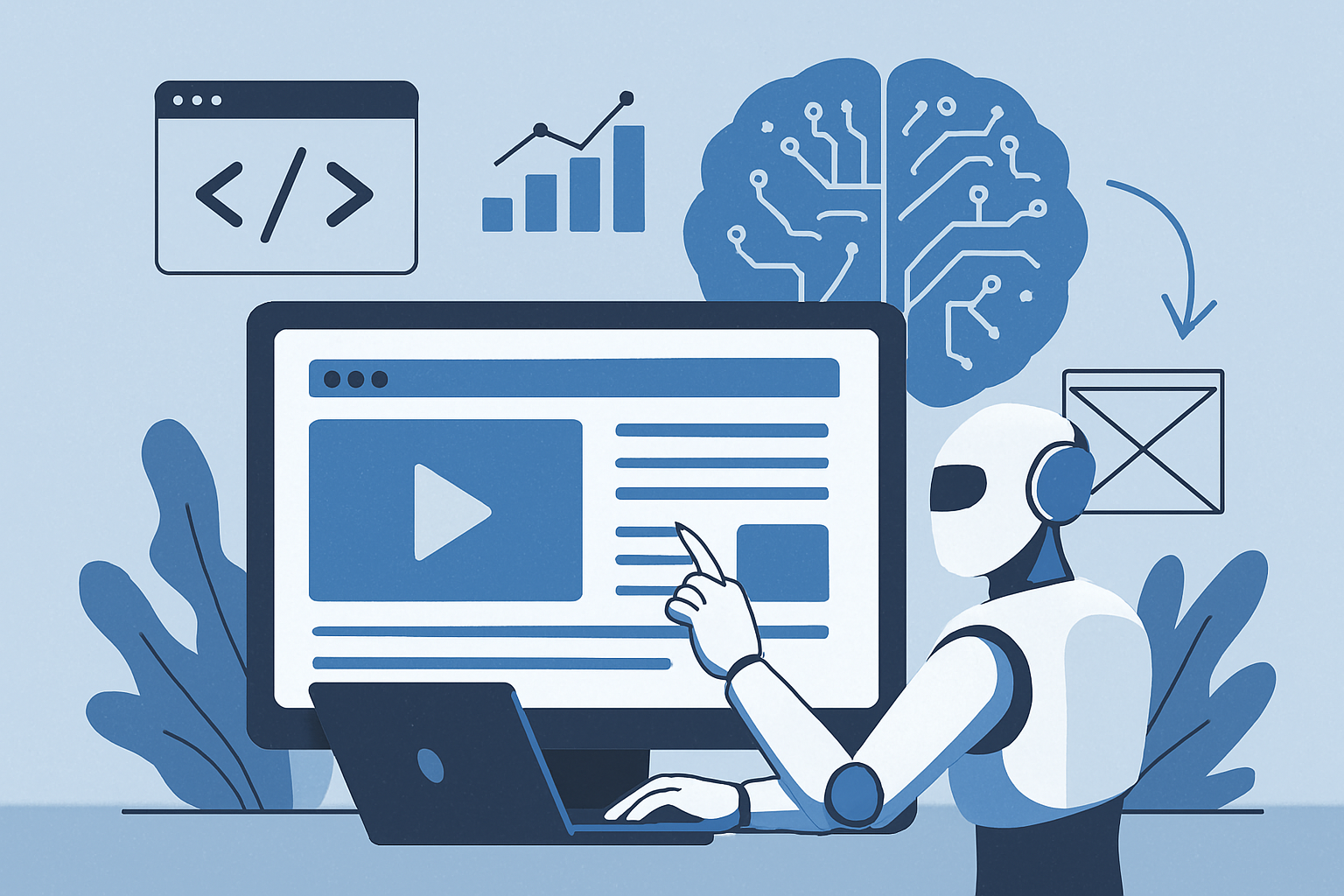
AI-Driven Web Design: Trends That Businesses Need to Know

Web design is evolving rapidly, with artificial intelligence (AI) at the forefront of this change. By 2025, AI-driven web design won't just be innovative—it will become essential. Companies must adapt to these trends to stay competitive and meet customer expectations for highly personalized and interactive web experiences.
Hyper-Personalization of User Experiences
Hyper-personalization leverages AI to customize website experiences for individual users in real time. This approach involves adjusting content, layouts, and product recommendations based on user data such as browsing history, behavior patterns, and location. For instance, an AI-powered e-commerce site might display running shoes prominently for a visitor frequently browsing athletic footwear. Such tailored experiences significantly boost user engagement and conversion rates.
To implement hyper-personalization effectively, businesses should integrate AI platforms with their existing content management systems (CMS) and databases, enabling dynamic, personalized interactions that improve customer satisfaction and loyalty.
Adaptive Interfaces and Responsive Design 2.0
Adaptive interfaces extend beyond traditional responsive design by dynamically adjusting to user preferences and contexts. AI-powered websites can adapt layouts, color schemes, and navigation based on real-time user interactions and preferences, such as frequently enabling dark mode or preferred navigation methods. This adaptability ensures smoother user experiences tailored specifically to user behaviors and contexts.
Businesses can begin experimenting with adaptive elements through AI analytics and personalization tools, refining user experiences in real-time and making websites more intuitive and user-friendly.
AI-Assisted Web Design
AI-assisted design tools significantly accelerate the creative process, providing automated, data-driven design recommendations and variations. These tools rapidly generate diverse layouts, apply cohesive branding elements, and analyze user engagement data to suggest improvements. This automation enables designers to focus on strategic, high-value tasks while rapidly producing sophisticated and user-centric web designs.
Companies can leverage AI-powered web builders and design tools to produce polished, professional-looking websites quickly and cost-effectively, ensuring designs consistently reflect user preferences and trends.
Voice and Conversational UI Integration
The rise of AI-driven conversational and voice user interfaces (VUIs) marks another critical web design trend. These interfaces simplify user interactions by allowing natural language queries and voice-based searches. Incorporating conversational AI into websites significantly enhances user engagement by providing instant, convenient responses to inquiries.
Businesses should prioritize integrating conversational elements seamlessly into their websites, creating a more accessible, intuitive, and engaging user experience.
Data-Driven Design Decisions
AI analytics allows companies to make web design decisions informed by extensive user interaction data. By continuously analyzing user behavior, AI highlights opportunities for design improvements, enabling businesses to make iterative changes based on concrete data rather than assumptions.
Regularly leveraging AI-driven insights helps businesses maintain an optimized, user-friendly website, resulting in continuous improvement and better performance.
Conclusion
Embracing AI-driven web design trends—such as hyper-personalization, adaptive interfaces, AI-assisted design, conversational interfaces, and data-driven decision-making—enables businesses to deliver exceptional online experiences. Companies that adapt these trends effectively will ensure their websites remain competitive, engaging, and highly effective in the evolving digital landscape.
Table of Contents
Related Articles
Stay updated with AI trends
Subscribe to our newsletter for the latest insights and strategies.


